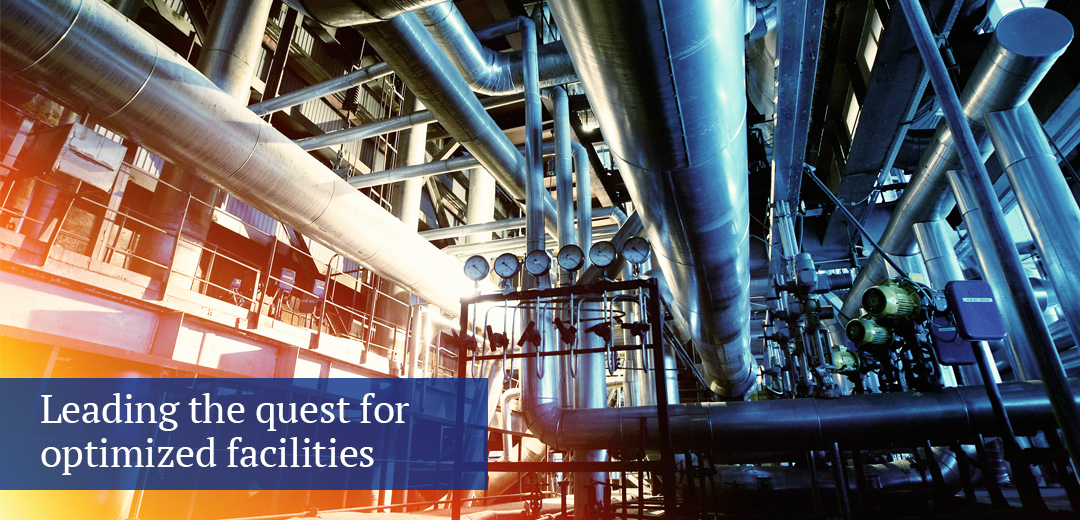Facilities management is a crucial aspect of any business. It involves the coordination and maintenance of physical assets, resources, and services that are necessary for the smooth functioning of a company. This can include everything from buildings and equipment to security and compliance measures. In this blog post, we will delve into the world of facilities management and explore its importance, best practices, innovative technologies, sustainability efforts, and more.
The Importance of Facilities in Business Operations

Facilities play a vital role in the overall success of a business. They provide the necessary infrastructure, resources, and support systems for employees to carry out their work efficiently. Here are some key reasons why facilities management is essential for businesses:
Enhances Productivity and Efficiency
Well-maintained and carefully planned facilities can significantly improve the productivity and efficiency of a company. A well-designed office space with ergonomically designed furniture and proper lighting can contribute to a comfortable working environment, leading to happier and more productive employees. Additionally, efficient facilities management ensures that all necessary resources are readily available and properly functioning, thereby reducing downtime and increasing productivity.
Ensures Cost-Effective Operations
Facilities management involves strategic planning and budgeting, which helps businesses optimize their expenses. By regularly maintaining and upgrading equipment and systems, businesses can prevent costly breakdowns and repairs. Moreover, effective facilities management can identify and eliminate unnecessary expenditures, ultimately leading to greater cost savings.
Supports Business Growth and Expansion
As businesses grow and expand, their facilities need to evolve accordingly. Facilities management plays a crucial role in ensuring that the company’s physical infrastructure can accommodate its growth. From planning and designing new facilities to managing the relocation process, facilities management professionals ensure that these transitions are as seamless as possible.
Promotes a Positive Image
A company’s facilities reflect its values, culture, and brand. A well-maintained and aesthetically pleasing workspace can create a positive impression on clients, customers, and employees. On the other hand, poorly managed facilities can have the opposite effect, leading to a negative image of the company.
Best Practices for Facilities Planning and Design

Effective facilities planning and design are essential for creating a functional and efficient workspace. Here are some best practices that businesses can follow to ensure their facilities meet their needs:
Conduct a Needs Assessment
Before designing or renovating a facility, businesses must assess their current and future needs. This involves evaluating their space requirements, budget, and any specific industry or regulatory requirements. Understanding these needs will help businesses make informed decisions and avoid costly mistakes in the long run.
Consider Ergonomics and Accessibility
Ergonomics and accessibility should be top priorities when designing a workspace. This includes ensuring that the office layout promotes healthy and comfortable work habits, such as providing adjustable desks and chairs and proper lighting. Additionally, facilities should be designed with accessibility in mind to accommodate employees with disabilities.
Incorporate Sustainability Measures
In recent years, there has been a growing emphasis on sustainability in facilities management. Not only is it essential for reducing a company’s environmental impact, but it can also help businesses save costs in the long run. Some sustainable measures businesses can incorporate in their facilities include energy-efficient lighting and HVAC systems, waste reduction strategies, and the use of eco-friendly materials.
Plan for Future Growth and Flexibility
Facilities planning and design should not be limited to meeting just current needs, but it should also consider future growth and changing needs. This involves having a flexible design that can easily adapt to new technologies, employee growth, and changes in business operations. This will prevent the need for frequent renovations and save the company time and money.
Innovative Technologies for Facilities Management

The world of facilities management is constantly evolving, and technology plays a significant role in this evolution. With the rise of smart buildings and the Internet of Things (IoT), there are now various innovative technologies that businesses can use to enhance their facilities management efforts. Here are some examples:
Building Information Modeling (BIM)
BIM is a 3D modeling technology used in the design, construction, and management of buildings. It allows facilities managers to create a digital representation of a building, providing valuable insights into its physical and functional characteristics. This helps with space planning, maintenance, and repair activities.
Computer-Aided Facilities Management (CAFM)
CAFM software enables businesses to manage all aspects of their facilities, including space planning, maintenance, and asset management. With this technology, facilities managers can track equipment and inventory, schedule maintenance tasks, and generate reports for budgeting and forecasting purposes.
IoT-Based Asset Tracking
IoT technology allows businesses to track and monitor assets through sensors and real-time data. This can be particularly useful for managing large facilities with numerous assets, as it provides accurate and timely information on their location, condition, and usage patterns.
Sustainability in Facilities Management

Sustainability has become a major focus in facilities management due to its potential to reduce costs, improve efficiency, and contribute to a better environment. Here are some ways facilities management can incorporate sustainability measures:
Energy Efficiency
One of the most significant contributors to a company’s carbon footprint is energy consumption. Facilities managers can implement energy-efficient technologies, such as LED lighting and smart HVAC systems, to reduce energy consumption and costs.
Waste Reduction and Recycling
Facilities managers can implement waste reduction strategies such as recycling programs to divert waste from landfills and reduce a company’s environmental impact. This could include separating recyclable materials, using composting methods, and implementing electronic waste disposal practices.
Water Conservation
With growing concerns about water scarcity, facilities management can play a crucial role in conserving water. This can involve installing low-flow fixtures, such as toilets and faucets, and implementing water management systems to monitor and reduce water usage.
Facilities Management Software: Benefits and Implementations
Facilities management software has become increasingly popular in recent years, with the rise of smart technologies and the need for more streamlined operations. Here are some benefits of using facilities management software:
Centralized Data Management
Facilities management software allows businesses to store all their facilities-related data in one central location. This includes information about equipment, maintenance schedules, inventory, and more. This makes it easier for facilities managers to track and manage various aspects of their facilities, leading to increased efficiency.
Automation of Tasks
Many facilities management software solutions offer automation capabilities, which can significantly reduce the manual workload of facilities managers. This includes automating maintenance scheduling, generating reports, and managing work orders. These tasks can also be assigned to specific team members, streamlining communication and improving productivity.
Real-Time Monitoring and Reporting
With the help of sensors and real-time data, facilities management software can provide accurate and timely information on the condition of assets, energy consumption, and other crucial metrics. This enables facilities managers to make informed decisions and take proactive measures to prevent issues from escalating.
Security and Compliance in Facilities Management
Security and compliance are critical aspects of facilities management, particularly for businesses that handle sensitive data or operate in highly regulated industries. Failure to comply with regulations and maintain adequate security measures can lead to legal consequences and damage to a company’s reputation. Here are some key considerations for security and compliance in facilities management:
Physical Security Measures
Facilities managers must prioritize physical security measures to protect a company’s assets, employees, and visitors. This could include installing surveillance cameras, access control systems, and alarms, as well as conducting regular security audits and training employees on security protocols.
Cybersecurity Measures
As technology becomes more integrated into facilities management, cybersecurity has become a significant concern. Facilities managers must ensure that all software and systems used in their facilities are secure and regularly updated to protect against cyber threats. This could include implementing firewalls, encryption, and strong password policies.
Compliance with Regulations
Different industries have various regulations that businesses must comply with to operate legally. Facilities managers must stay up-to-date with these regulations and ensure that their facilities meet all necessary requirements. This includes safety and health regulations, building codes, and data protection laws.
Benchmarking in Facilities Management
Benchmarking involves comparing a company’s performance to industry standards or best practices to identify areas for improvement. In facilities management, benchmarking can help businesses identify inefficiencies, reduce costs, and improve overall operations. Here are some examples of benchmarking in facilities management:
Cost Benchmarking
Cost benchmarking involves comparing a company’s expenses related to facilities management with industry averages or those of similar organizations. This helps businesses identify areas where they may be overspending or underutilizing resources and make adjustments accordingly.
Performance Benchmarking
Performance benchmarking involves comparing the performance of an organization’s facilities with those of similar companies. This can include metrics such as energy consumption, maintenance costs, and uptime. By identifying top performers, facilities managers can gain insights into effective practices and strategies to improve their own performance.
Compliance Benchmarking
Facilities managers can also use compliance benchmarking to compare their adherence to regulations and industry standards with others in the same field. This can help identify potential compliance gaps and ensure that all necessary measures are taken to avoid legal consequences.
Emerging Trends in Facilities Management
With technology and sustainability driving change in the world of facilities management, there are several emerging trends that businesses should keep an eye on. These include:
Growth of Smart Buildings
Smart buildings are becoming increasingly popular due to their potential to enhance energy efficiency, reduce costs, and improve occupant comfort. With the integration of IoT sensors and management software, facilities managers can monitor and control various aspects of buildings, such as lighting, temperature, and security, in real-time.
Focus on Employee Well-Being
Facilities management is no longer just about maintaining physical assets; it also involves creating a conducive and healthy working environment for employees. As more and more companies prioritize employee well-being, facilities managers are incorporating amenities such as fitness centers, relaxation rooms, and natural lighting into their design plans.
Increased Use of Predictive Maintenance
Traditionally, maintenance tasks were carried out based on a pre-determined schedule or when an issue arose. However, with the rise of predictive maintenance technology, facilities managers can now use sensors and data to predict when equipment may fail and proactively schedule maintenance, reducing downtime and costs.
Future-Proofing Facilities for Evolving Business Needs
As businesses continue to evolve and adapt to changing technologies and industry trends, facilities management must also keep up. To future-proof their facilities, businesses should consider the following:
Flexibility in Design
As mentioned earlier, flexibility in facilities design can help accommodate future growth and changes in business operations. This can involve using modular furniture, movable walls, and multi-functional spaces that can easily be reconfigured as needed.
Regular Maintenance and Upgrades
Regular maintenance and upgrades are essential for ensuring that facilities are functioning at their best and meeting current needs. Additionally, facilities managers should have a plan in place for replacing outdated equipment and systems to prevent disruptions to operations.
Staying Informed about Industry Trends
Facilities managers must stay informed about emerging trends and technologies in their field to ensure that their facilities remain competitive and up-to-date. This could involve attending conferences, networking with other professionals, and conducting research on new developments in facilities management.
Conclusion
In conclusion, facilities management is a crucial aspect of any business, and its importance cannot be overstated. From enhancing productivity and efficiency to promoting sustainability and compliance, facilities management plays a significant role in the success of a company. By following best practices, incorporating innovative technologies, and staying informed about emerging trends, businesses can ensure that their facilities are future-proofed and ready to adapt to evolving business needs.
Also visit for more blogs at : TTM: A Comprehensive Guide



